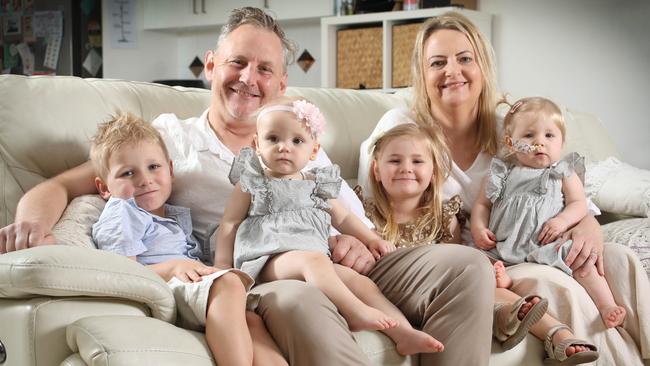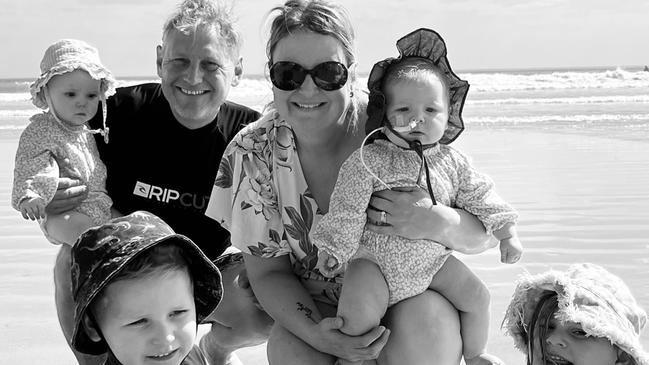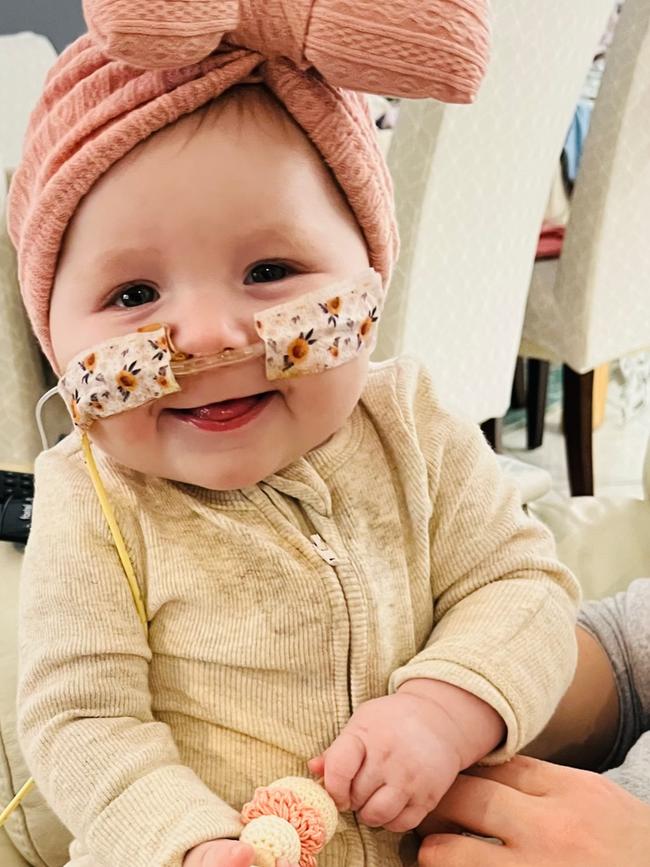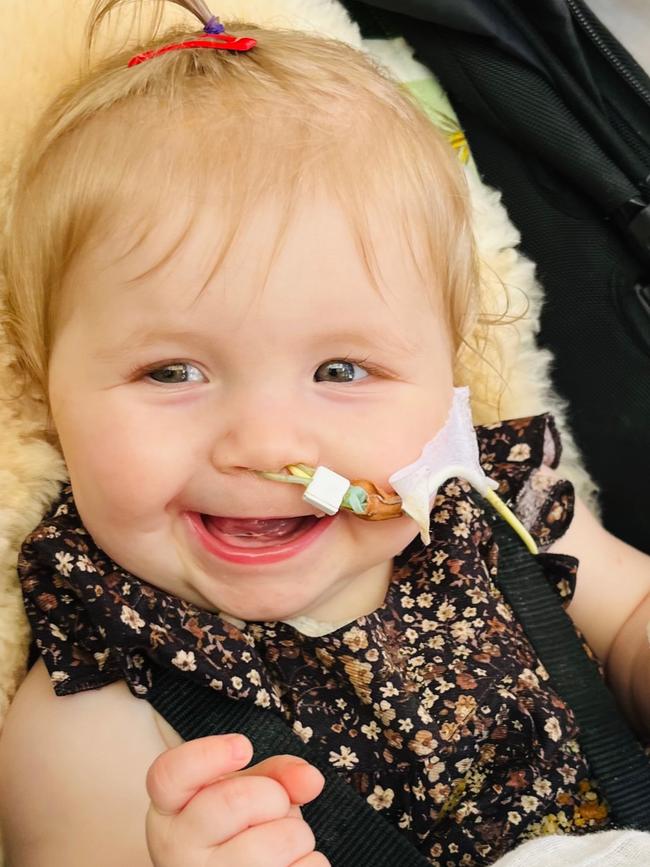Mawson Lakes parents Susan and Ben Dzioba have two sets of twins under the age of 5
No, your eyes aren’t playing tricks on you – Susan and Ben Dzioba from Mawson Lakes have two sets of twins. And all four share a common thing that’s kept them alive.

Lifestyle
Don't miss out on the headlines from Lifestyle. Followed categories will be added to My News.
The phenomenon of twins occurs just once in every 80 births in Australia but for a Mawson Lakes family it happened twice in three years.
Susan and Ben Dzioba from Mawson Lakes have two sets of fraternal twins – Leo and Myla who were born on July 21, 2019 and Avaya and Maisie born on December 9, 2022.
Twins represent about 1.5 per cent of all births in Australia and of those, 30 per cent are identical and 70 per cent fraternal, according to Twins Research Australia.
It’s a rare occurrence the Dziobas have in common with retired tennis legend Roger Federer.
The Swiss tennis star and his wife Mirka became parents to twin girls in 2009 and five years later to twin boys.
Not only that, two of their children share first names – the Federers named their twin daughters Charlene and Myla and their sons Leo and Lenny.

Ms Dzioba, a social worker, has her hands full managing four children under the age of five – two of whom suffer from a condition known as laryngomalacia and tracheomalacia.
“Basically the condition both Avaya and Maisie have means their larynx, trachea and bronchial airways are underdeveloped,” she said.
Ms Dzioba said she first noticed something was wrong when her babies, who were initially breastfed, developed reflux and were hospitalised with ongoing chest infections.
“The girls were coughing badly and Avaya was vomiting blood,” she said.
“In June last year, both girls were admitted to hospital and Maisie had a lung collapse.”
Ms Dzioba said the condition, which occurs when tissues around the larynx and trachea soft or floppy, could lead to breathing difficulties, feeding issues and respiratory infections.
Avaya was put on 24-hour oxygen while in hospital and the couple was trained to manage feeding the infant twins via a tube.
“The feeding tube means that Avaya has a tube that goes down her nose and all the way into her intestine – the milk or fluid bypasses the stomach,” Ms Dzioba said.
“The tube is connected to a pump for 19 out of 24 hours a day.
“The pump has to be changed every four hours and Avaya’s line is flushed with cooled, boiled water in a syringe.”
While twin sister Maisie can be managed by thickening her feeds enough so liquid cannot enter her lungs, she will often endanger sister Avaya by pulling out her sister’s tube.
“Avaya being connected to a pump and having a feeding tube restricts her – she isn’t able to play freely with her sister,” Ms Dzioba said.
“She needs to be followed around and her pump and line watched so that the tube doesn’t become tangled.
“But it’s difficult to manage with two sets of twins, we have been back to hospital lots of times because Maisie has pulled it (the tube) out.”


Registered midwife Anastasia Tsompanoudis said nasogastric tube feeding was necessary if a baby had a medical need, such as gastric decompression, tachypnoea (abnormal rapid breathing) or a neurological condition that affected direct feeding but it was often “turned to as a solution too quickly”.
“In my experience, it has become an increasingly used procedure used more commonly for poor feeding or poor weight gain,” Ms Tsompanoudis said.
“Although it has its place for nutrition and other medical situations, it can affect the success of future feeding – a consequence not often explained to parents prior.
“Not only is the baby not developing their reflexes and behaviour, but the mother’s milk supply suffers, even if pumping is involved.
“Removing the tube and resuming feeding after this can be extremely challenging.”
For the Dziobas, the feeding tubes – while problematic – have ultimately kept all four of their children alive and healthy.
“I understand families trying to manage kids with health issues,” Ms Dzioba said.
“All four are my precious miracles.”




